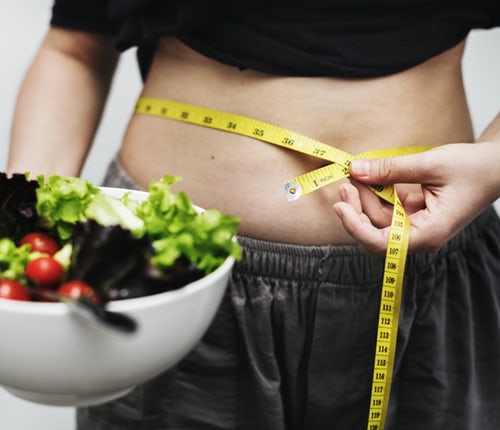KETOSIS SYMPTOMS: SIGNS YOU ARE IN KETOSIS

A lot of questions come to our mind when we start with a new kind of diet and here we are for the beginning of keto.
The ketogenic diet proved to be a gem for me.
Yes, there was a situation when I used to feel less energetic and fatigued but very soon I started regaining all my energy back and this time feeling much more rejuvenated.
If you need to learn about the ketogenic diet then the keto diet for beginners will be handy for you.
WHAT IS KETOSIS?
Ketosis is the process when your body starts to burn fat for energy instead of burning carbs for its energy.
Our body is usually carb and sugar dependent. So when we cut the carbs from our diet, it naturally turns to fat for its energy source.
This is when our body starts to produce ketones. I guess the term ketogenic diet is the derivation from the product ketones itself which are produced to supply energy to our body.
So what happens when the body burns fat for energy? You just simply start to lose weight.
SIGNS YOU ARE IN KETOSIS: KETOSIS SYMPTOMS

Once when you start the diet you should start seeing the signs of ketosis in a week.
To get scientifically sure you can use ketone strips which are available even on Amazon.
I am going to state the ketosis symptoms in the order I felt them.
HOW LONG DOES IT TAKE TO GET INTO KETOSIS
I am no nutritionist but personally, it took me 3-4 days to get into ketosis or start seeing the ketosis symptoms.
SYMPTOMS OF KETOSIS

1. FATIGUE

I am starting by stating fatigue as a ketosis symptom as this was the first side effect that I felt.
Though it was a short-term effect, it was a noticeable one.
I was not able to concentrate on anything because all day long I was literally thinking about food.
This happens because our body is on a low-carb high-fat diet now, so it does not know where to get its energy from.
You may also crave spicy or sugary foods but be sure to avoid them.
Within 3-4 days you will start feeling normal as your body now knows that it has to convert the fat into energy and leave its long lasted relationship with the carbs.
How can you avoid it?
Drink a lot of water.
It helps you to keep up the electrolyte and stay hydrated.
You may also read 13 keto mistakes to avoid when you are starting a ketogenic diet to get a better grip on electrolyte imbalance in your body.
Drinking a lot of water at the beginning of a keto diet should not be a problem as normally you will feel thirsty due to the release of water from the body.
2. INSOMNIA

I used to feel hungry at night as the low-carb diets made my body feel as if I am not taking proper food.
The result is insomnia.
Everybody is different. So, I am not sure if you will feel the same.
But this lack of sleep was overly caused due to the increase in stress hormones.
DO NOT WORRY this will not last more than 4-5 days.
Definitely, our body also needs time to get adapted to a new kinds of healthy eating habits.
3. DECREASED PHYSICAL PERFORMANCE

I love doing exercise. But after I started with the keto diet, I started feeling tired even after 15-20 minutes of free hand exercises.
Just like I said that I used to feel tired for the first few days of the keto diet, so I guess for the fatigue there was a decrease in my physical performance too.
Your body should be fully adapted to the keto diet before you start with the exercise routine.
You can read exercises in keto for a better hold.
4. TOILET TROUBLE

There will be toilet trouble for sure if you are doing Keto right. But, how your body is going to respond there is no definite answer to it.
Now, this can be a bit confusing as different problems may arise as increased urination, constipation, or diarrhea.
Increased Urination:
Basically, the water is released from the dropping of insulin.
In the first few days, people normally lose weight which is mainly water weight.
Constipation
We mainly get fiber from the carbs.
Now as the carbs are missing so people days constipated.
You need to add more fiber to your diet. Go for nuts, seeds, and lots of green veggies.
Check out the list of what can you eat on a keto diet and also the vegetables which are safe while on a keto.
Diarrhea
This is just the opposite condition.
In a keto diet, you start taking a lot of fat for which the stomach becomes upset and hence diarrhea.
Stay hydrated and give a couple of days to your new diet plan and everything will fall back in place.
5. WEIGHT LOSS

I know you are very happy about reading this point. Yes, weight loss takes place.
Not only do you start losing the water weight initially which is a temporary weight loss but for many people, the actual process of losing weight due to the ketogenic diet also starts right in the first week.
This water weight can come back as fast as you lose them.
Stick to your low-carb diet and avoid any keto mistakes to enter full-fledged ketosis as soon as possible.
6. LOSS OF URGE OF EATING

There are several symptoms of ketosis, but this one I realized after 3-4 days of my ketogenic diet.
I was not willing to eat anything. Even eating seemed like work to me.
I was happy as I was on a diet and it really helped me to stick to my routine of low-carb meals.
It is indeed a happy sign.
So slowly your body is getting fat adapted and you are no more craving for sugary foods or carbs.
Fat and proteins are your main foods now.
Though I used to feel the craving for carbs a lot of times and a few times I cheated too. But that definitely pushed me back on my keto journey. I hope you will stick to the keto diet.
Trust me just after a week your body will settle down for the fat and high protein adaption.
7. INCREASED ENERGY LEVEL

Finally some increase in energy levels and focus to work.
When you are actually ditching the sugar then you will not even feel tired in the afternoons.
These endless energies come from the fats and ketones which are a great source of fuel to the brain.
It will make you stay focused on your work.
This is a great benefit from doing a keto diet that along with weight loss you will have a lot of energy all throughout the day.
7. INCREASED KETONE LEVELS

This is a definite thing that if your body is producing more ketones then you are in ketosis.
HOW TO TEST FOR KETOSIS
All the above signs are a signal towards it but you can also get tested in tangible ways.
- Glucose Meter
- Breathe Ketone Analysers
- Blood ketone readers
- Urine ketone strips
Once when you are in ketosis now check out the 7-day keto meal plan for beginners and the keto recipes which are delicious.



